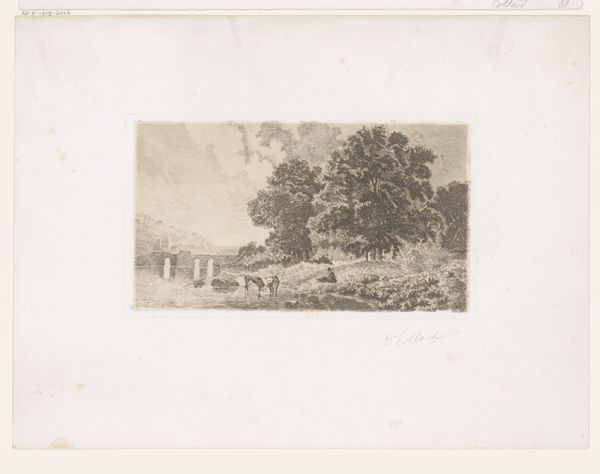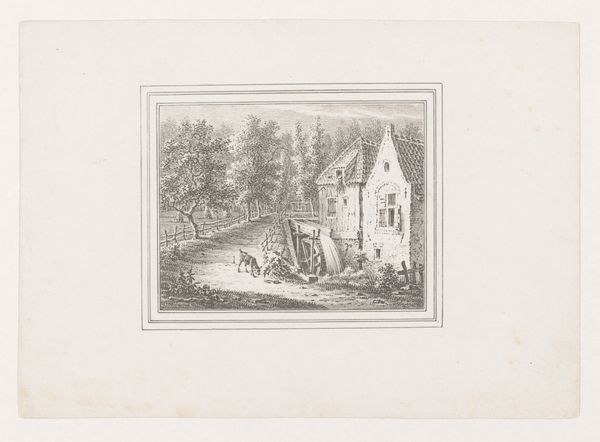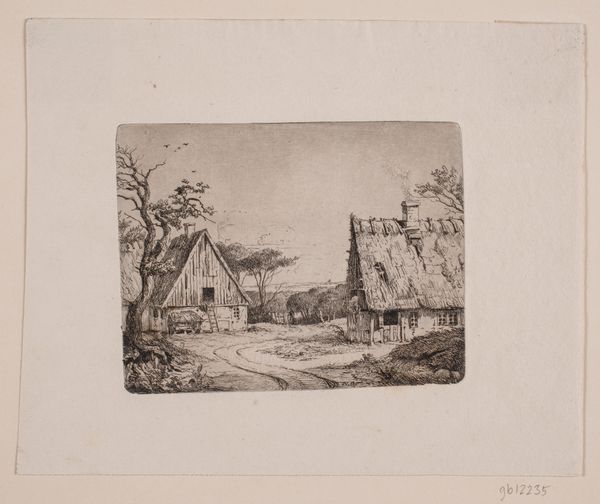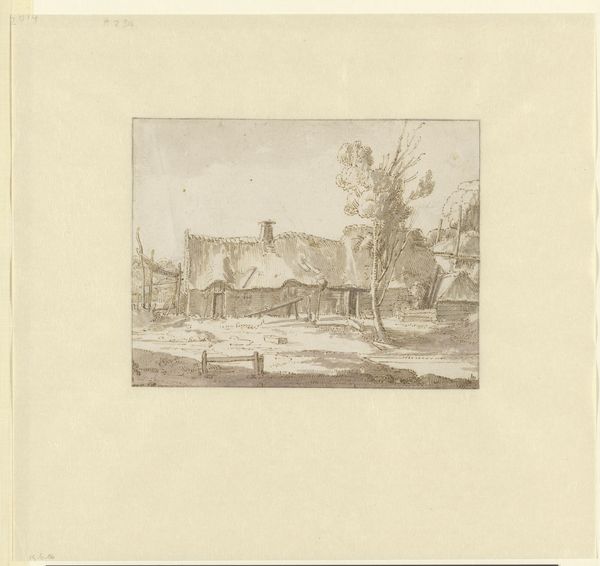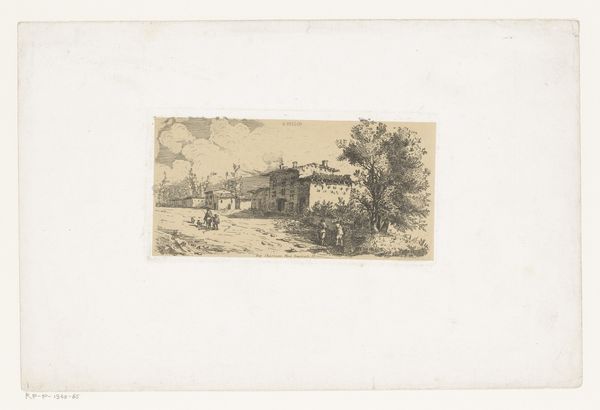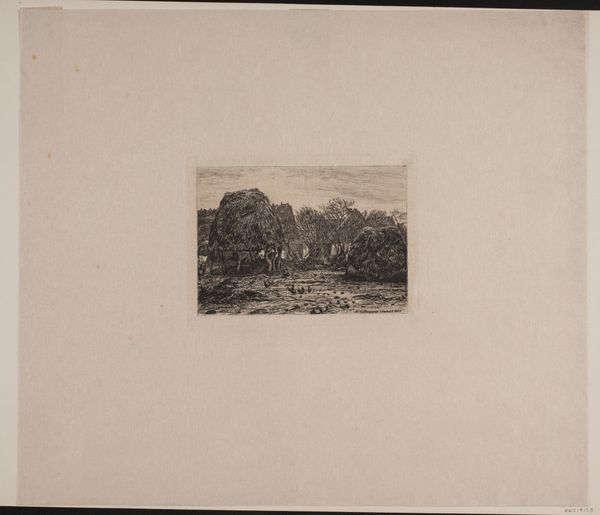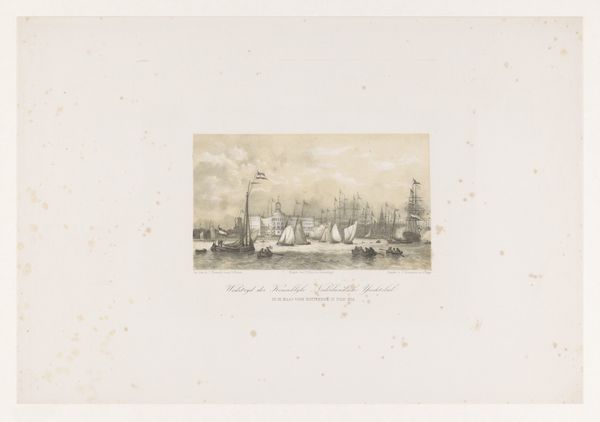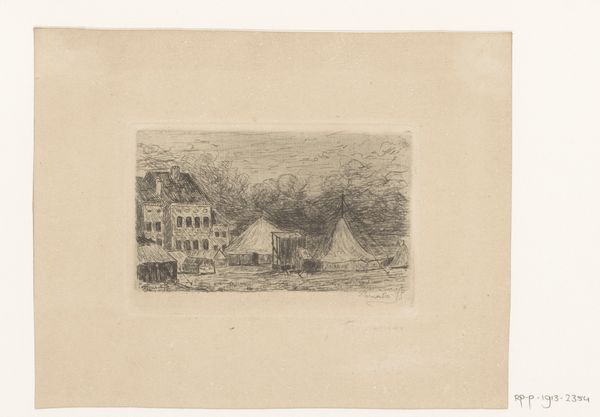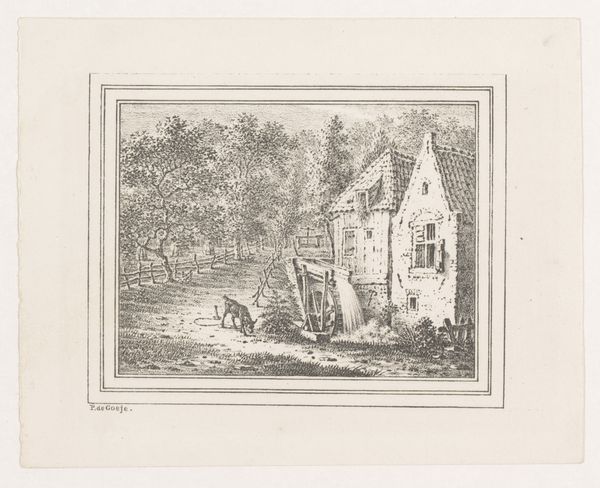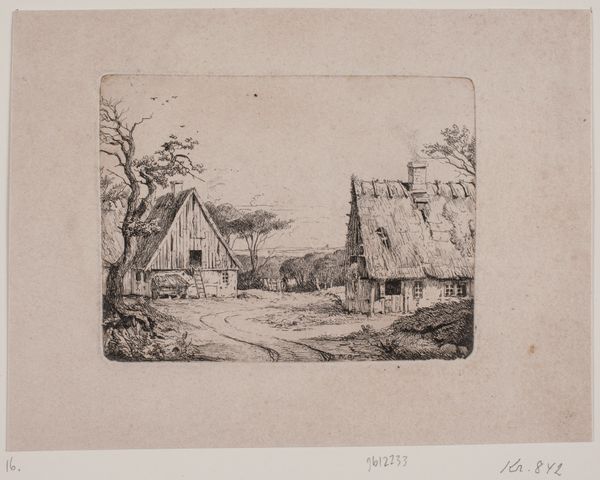
drawing, print, ink
#
drawing
# print
#
landscape
#
ink
#
romanticism
#
realism
Dimensions: 112 mm (height) x 192 mm (width) (bladmaal)
Curator: Well, here we have "Gadeparti i Frederiksværk" by Vilhelm Kyhn, made sometime between 1842 and 1849. It’s currently housed here at the SMK. It appears to be an ink drawing, or perhaps a print of some kind, depicting a street scene. Editor: You know, it strikes me as so meticulously… ordered? The way the lines are laid down, almost diagrammatic. I get a sense of quiet diligence. It’s… precise. A touch somber, maybe. Curator: Indeed. Kyhn was a proponent of both realism and romanticism, and I see elements of both here. The detailed depiction of the buildings and street lends itself to a kind of factual realism, while the atmosphere—the slightly faded light, the quiet figures—conjures a certain romantic longing for simpler times. Notice how the bridge draws your eye right in? Editor: I do! And it also reminds me a bit of looking through an old photograph, all these very simple strokes. It has a memory-like quality, like trying to capture something about to vanish. Is that intentional do you think? Curator: The vanishing element is very important to acknowledge. Romanticism often embraces a kind of *Sehnsucht,* that is, a longing for something lost or unattainable. Perhaps it speaks to the rise of industrialization during that period, as people were searching for simpler pre-industrial lives. A longing reflected in their icons and their homes. The details almost serve as mementos of something soon to be replaced. Editor: That resonates so well, now that you mention the homes. They aren’t overly ornate or spectacular, just… present. Practical even. Like everyday life, simply recorded for its quiet, unshowy dignity. I really enjoy pieces like these, where so much is told with so little… Curator: Yes, an excellent point. I appreciate your connection to the intimacy in this work. Now looking at the semiotics of bridges, that span. Thinkers over the ages have imbued bridges as connective symbols, pathways between separate parts of an observer's world…Kyhn may have intentionally used that symbology to indicate a yearning to connect to a time of great national or cultural connectivity that had disappeared by the late 1840s. Editor: Well, it certainly encourages us to reflect, doesn’t it? A lot of hidden detail! Curator: Exactly! An everyday street becomes something much more layered and interesting.
Comments
No comments
Be the first to comment and join the conversation on the ultimate creative platform.

